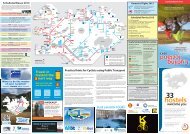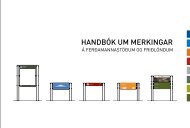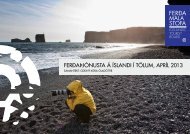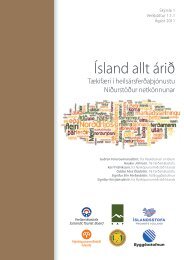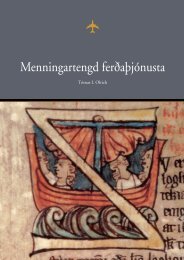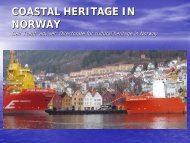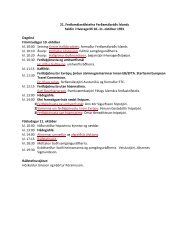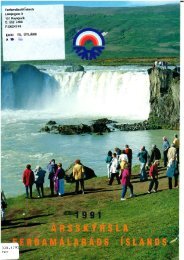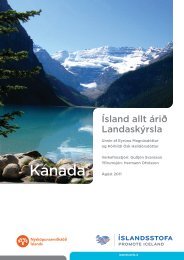Untitled
Untitled
Untitled
Create successful ePaper yourself
Turn your PDF publications into a flip-book with our unique Google optimized e-Paper software.
tourism reflects broader social and cultural changes so that consumption is<br />
no longer only about buying goods and services that one has some kind of<br />
direct need or use of. In addition, consumption has become a way to make<br />
social distinctions and identity statements through the symbolic values of<br />
commodities (Bourdieu 1984). Tourism itself has come to symbolise that<br />
one is able to travel, to go vacationing and to do all those things that one<br />
cannot do while working and staying in one’s home environment.<br />
With the idea of commodification, what has become clear is that<br />
these values that drive tourists to certain sights do not come out of the<br />
blue. They are produced and reproduced through meanings that are<br />
established in the interrelationship between the tourist and her or his<br />
society. For MacCannell, writing in the mid 1970s, that was a modern<br />
society characterised by processes of modernisation where old buildings,<br />
values and practices were rapidly being destroyed, leading to a<br />
fragmentation of daily life accompanied by disparate experiences where<br />
“everything solid melted into air”, as Marx once famously argued (quoted<br />
by Berman 1988). To this modern life, without a centre or coherence in<br />
which to put the fragments back into a whole, modern tourism appeared as<br />
a kind of solution. It promised in response to offer a reality in other<br />
peoples real material lives and in other times, places and cultures. Tourism<br />
became a kind of modern pilgrimage where tourists, driven by a quest of<br />
authenticity, were travelling on the lookout for signs of roots, history,<br />
heritage and perspectives on a world lost at home.<br />
Tourism then reflects a larger social shift from an industrial society<br />
to a consumer society in which commodities are consumed also for their<br />
symbolic values and their ability to signify taste, fashion and other cultural<br />
distinctions. Indeed, tourism has even become something of an icon of this<br />
change. It also illustrates well a development, under the regime of<br />
commodification, in which an ever greater realm of human life is being<br />
mediated and regulated by economic rationality in accordance with the<br />
ideologies of capitalism and neo-liberalism (Harvey 2005).<br />
Summing up<br />
In this chapter we began our conceptual travels with an investigation of<br />
two central concepts in tourism: image and destination. Instead of<br />
approaching them as isolated concepts we gradually tried to unfold them as<br />
keys into broader issues of representation that lie at the core of any social<br />
and culturally oriented tourism theory. We have thus also avoided the<br />
27



